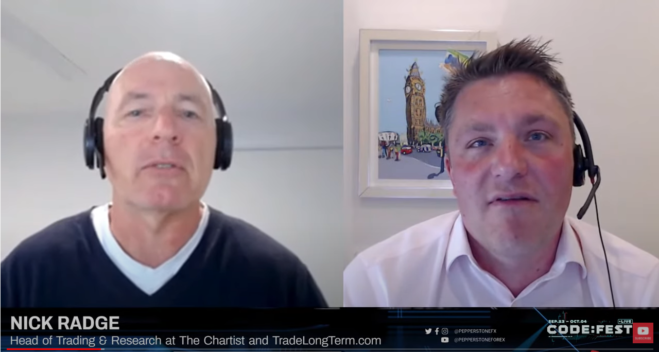Achieving a positive expectancy across trading systems

Published October 5th, 2021
Chris Weston from Pepperstone recently asked me how I achieve a positive expectancy across my trading strategies. We discussed how I come up with algorithmic trading strategies and how I manage the trading process. If you have any questions please get in touch. – Nick
Achieving a positive expectancy means having a trading strategy that allows your profits to run but cuts losses quickly. You don’t have to win all the time – that’s just not possible. You will have losing trades but successful trading is about limiting your losses.
When assessing a trading strategy we look at the winning percentage of trades and the win/loss ratio. Every trader will have a winning percentage of trades and a win/loss ratio. The win/loss ratio is your average win to your average loss. With trend following strategies, generally speaking, you will be running around that 45 to 50% win rate. In terms of the win/loss ratio, the lower winning percentage strategies tend to have a higher win/loss ratio of around two and a half to one. What that means is that we might only win 50% of the time, but for every dollar we lose, we make $2.50: that’s what achieving a positive expectancy means.
In the video I talk about how I allocate my trading capital across a portfolio of strategies. To give you an idea of how I do it I discussed how I was allocating my money in 2020 – it’s now a bit old but you can see how I allocate my capital across a number of trading strategies.
If you would like to learn how to design and code your own trading strategies then have a look at the Trading System Mentor Course. The course includes 6 months mentoring with me (Nick Radge) and Craig Fisher. Whilst I focus on trading system design and testing, Craig is the Amibroker Coding expert. Learn More
You can also follow along with my US Premium Portfolio.
